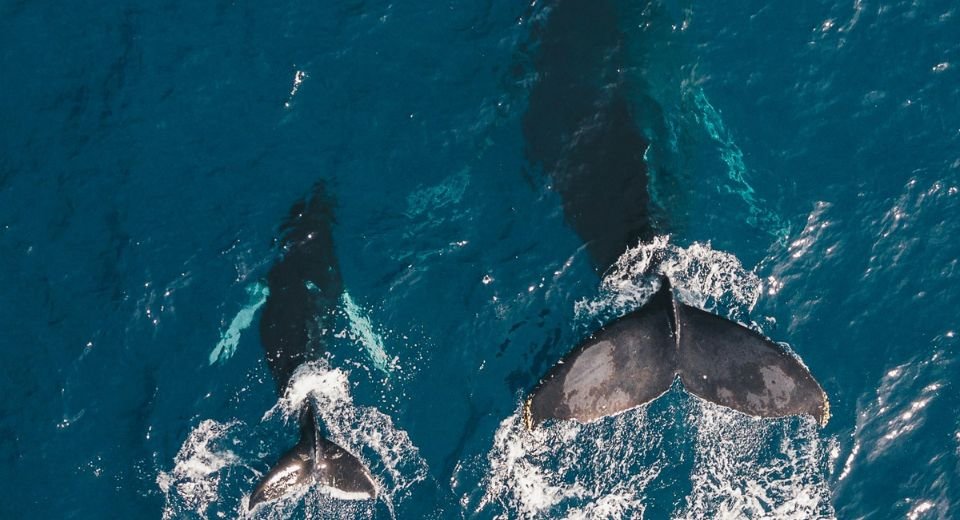HQ Team
June 17, 2024: The size of gray whales found along the Oregon coast in the US has shrunk by 13% in the past 20-30 years — a signal that may indicate that their population is starting to decline, a study shows.
The coastline, bordered by the Pacific Ocean to its west and the Oregon Coast Range to the east, stretches about 362 miles from the California state border in the south to the Columbia River in the north.
Marine researchers at Oregon State University looked at the Pacific Coast Feeding Group, a small subset of about 200 gray whales within the larger Eastern North Pacific population of around 14,500.
These 200 whales spend their summers feeding in the shallow and warm waters off the Pacific Northwest coast. Mostly, grey whales, expected to be in the region of 14,500 in the larger Eastern North Pacific, spend the bulk of their time in the Arctic Sea.
The contracting size could have major consequences for the health and reproductive success of the affected whales, and also raises alarm bells about the state of the food web in which they coexist, researchers said.
‘Early warning sign’
“This could be an early warning sign that the abundance of this population is starting to decline, or is not healthy,” said K.C. Bierlich, co-author of the study and an assistant professor at the university’s Marine Mammal Institute in Newport.
“And whales are considered ecosystem sentinels, so if the whale population isn’t doing well, that might say a lot about the environment itself.”
The Marine Mammal Institute’s Geospatial Ecology of Marine Megafauna Lab (GEMM) has been studying the subgroup of 200 gray whales since 2016, including flying drones over the whales to measure their size.
Researchers used images from 2016-2022 of 130 individual whales with known or estimated age. They found that a full-grown gray whale born in 2020 was expected to reach an adult body length that is 1.65 meters (about 5 feet, 5 inches) shorter than a gray whale born before 2000.
For gray whales that grow to be 38-41 feet long at full maturity, it accounts for a loss of more than 13% of their total length, according to a university statement.
‘Size is critical’
If the same trend were to happen in humans, that would be like the height of the average American woman shrinking from 5 feet, 4 inches to 4 feet, 8 inches tall over 20 years.
“In general, size is critical for animals,” said Enrico Pirotta, lead author of the study and a researcher at the University of St. Andrews in Scotland. “It affects their behaviour, their physiology, their life history, and it has cascading effects for the animals and the community, they’re a part of.”
Whale calves that are smaller at weaning age may be unable to cope with the uncertainty that comes with being newly independent, which can affect survival rates, Pirotta said.
For adult gray whales, one of the biggest concerns is reproductive success.
“With them being smaller, there are questions of how effectively these PCFG gray whales can store and allocate energy toward growing and maintaining their health. Importantly, are they able to put enough energy toward reproduction and keep the population growing?” Bierlich said.
Food availability
The study also delved into patterns of the ocean environment that likely regulate food availability for these gray whales off the Pacific coast by tracking cycles of “upwelling” and “relaxation” in the ocean.
Upwelling sweeps nutrients from deeper to shallower regions. At the same time, relaxation periods allow those nutrients to remain in shallower areas where light allows for the growth of plankton and other tiny organisms, including the prey of gray whales.
“Without a balance between upwelling and relaxation, the ecosystem may not be able to produce enough prey to support the large size of these gray whales,” said co-author Leigh Torres, associate professor and director of the GEMM Lab at the university.
The data show that whale size declined concurrently with changes in the balance between upwelling and relaxation, Pirotta said.
“We haven’t looked specifically at how climate change is affecting these patterns, but in general we know that climate change is affecting the oceanography of the Northeast Pacific through changes in wind patterns and water temperature,” he said. “And these factors and others affect the dynamics of upwelling and relaxation in the area.”
The study was published in Global Change Biology.
